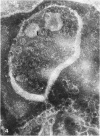Abstract
To test the hypothesis that complement-mediated cell lysis and cell-mediated cytotoxicity operate by analogous mechanisms, cell membranes from two antibody-dependent cytotoxicity systems were examined by electron microscopy after negative staining. Ring-shaped membrane lesions generally similar to, but larger than, those previously described for complement lysis were observed. These findings are in agreement with recent measurements of larger functional pores for ADCC than complement.
Full text
PDF
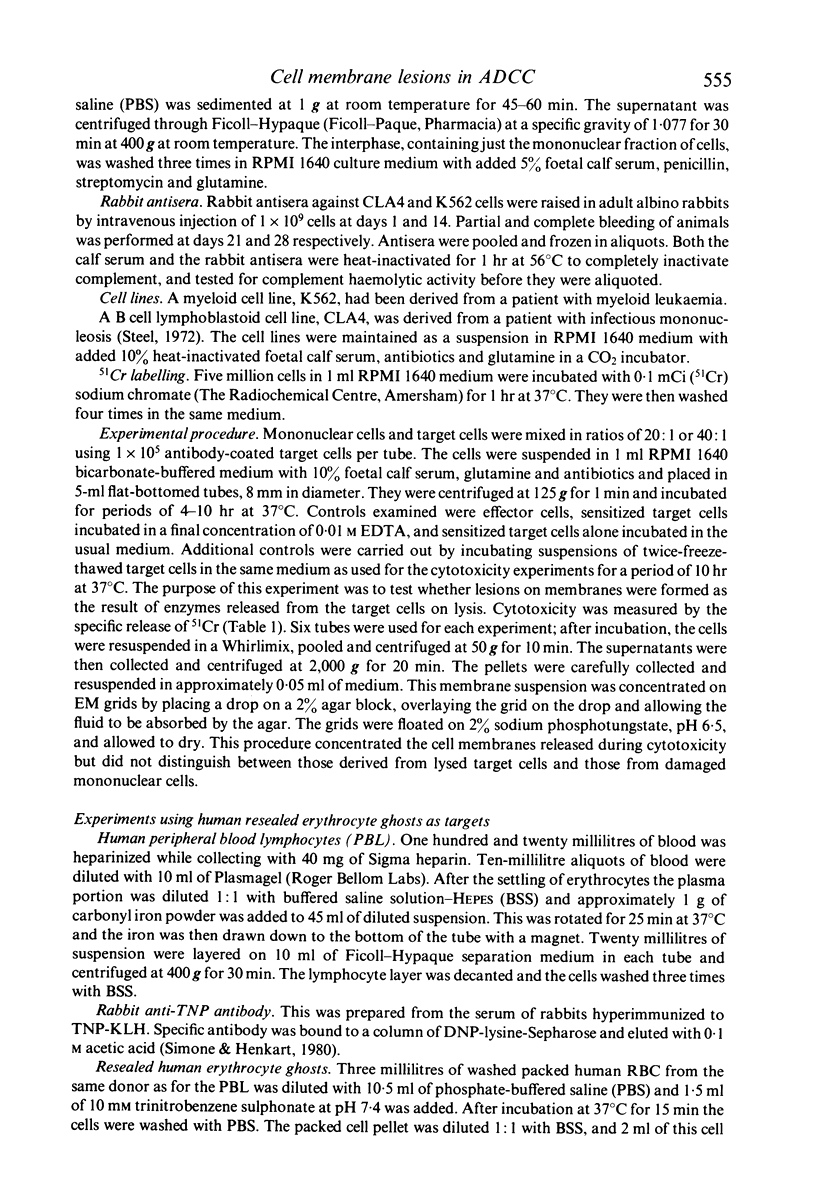

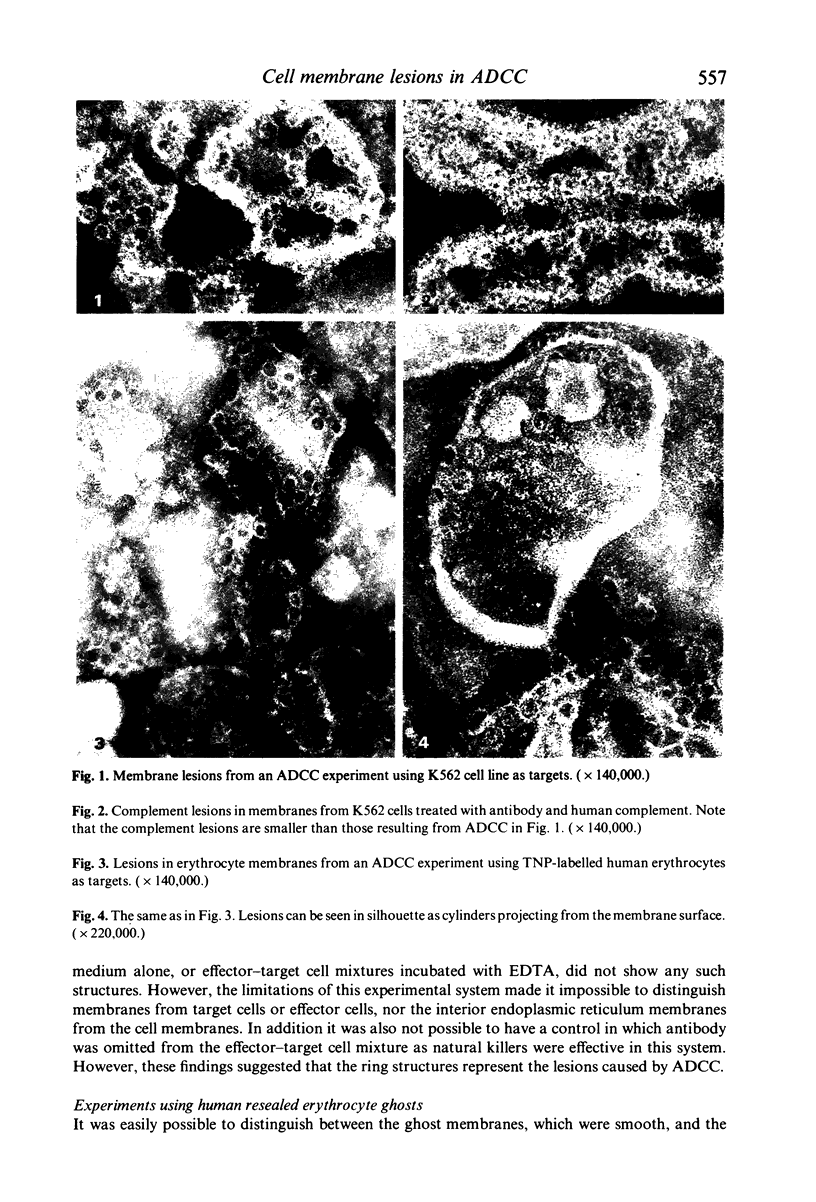
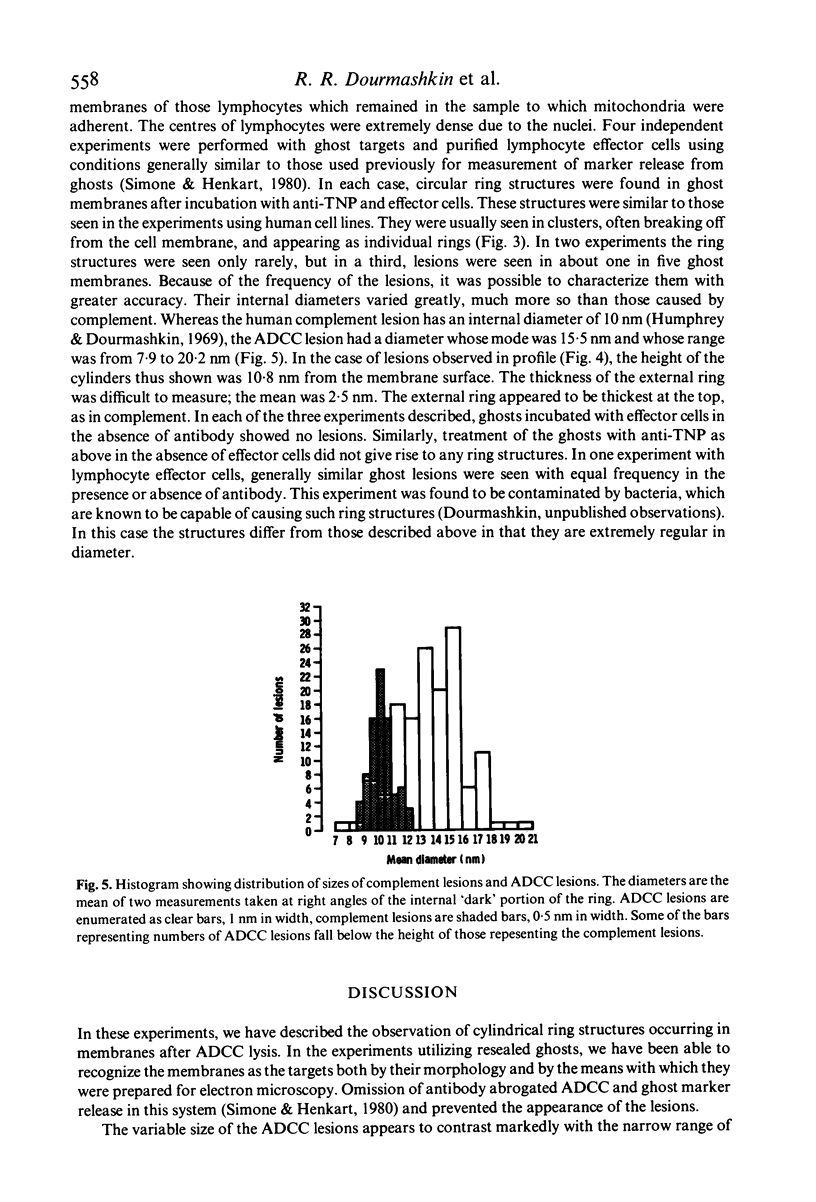
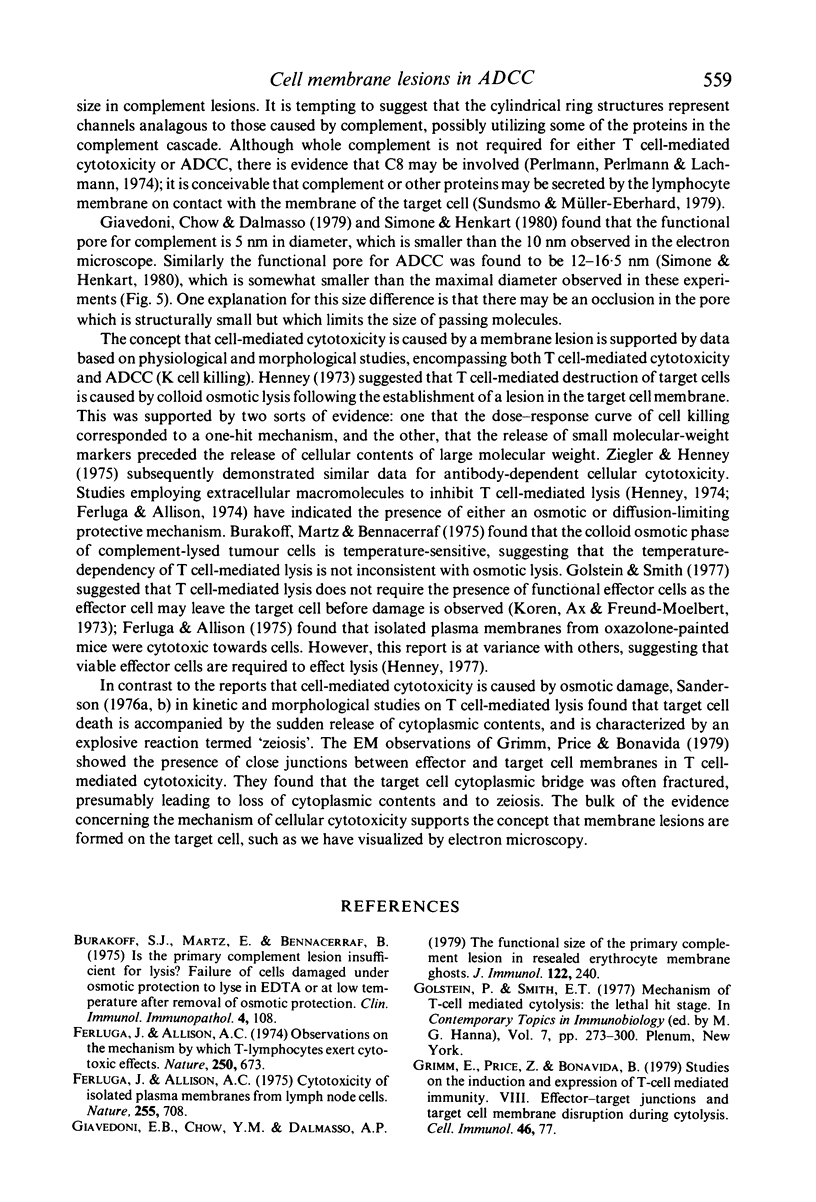
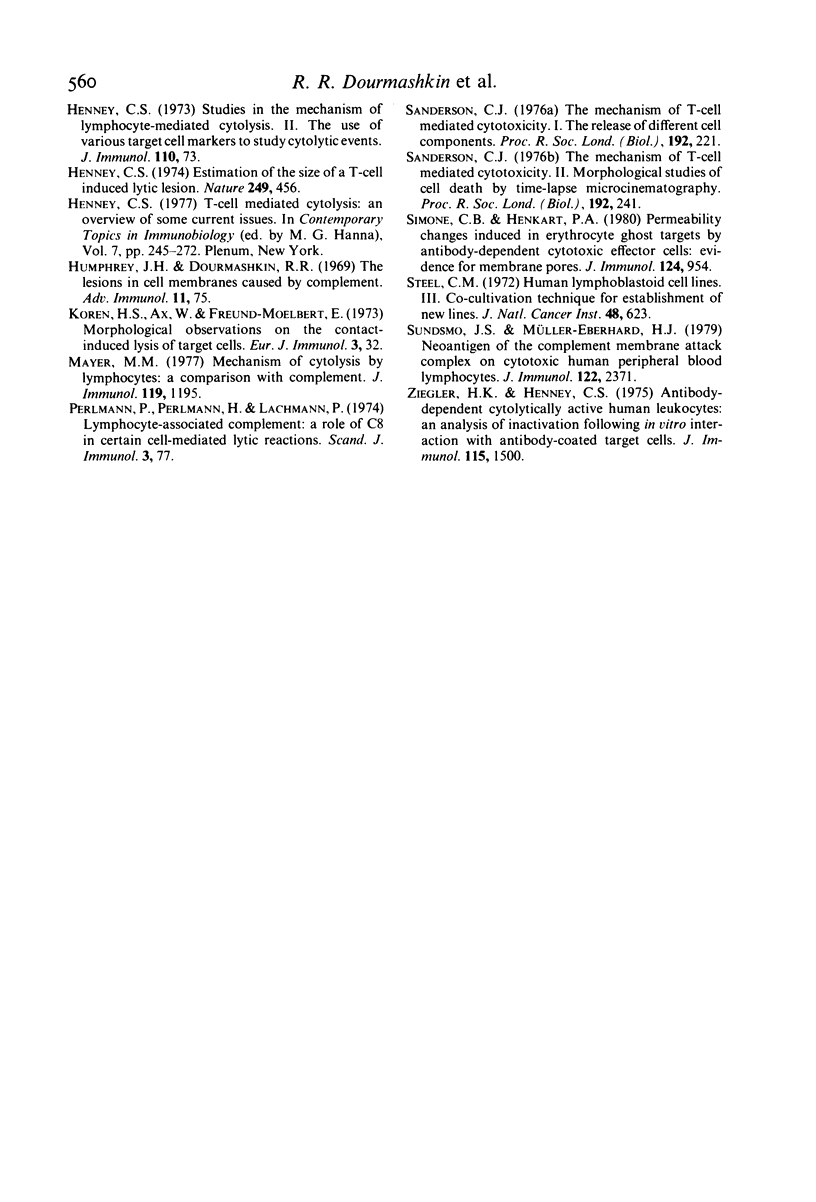
Images in this article
Selected References
These references are in PubMed. This may not be the complete list of references from this article.
- Burakoff S. J., Martz E., Benacerraf B. Is the primary complement lesion insufficient for lysis? Failure of cells damaged under osmotic protection to lyse in EDTA or at low temperature after removal of osmotic protection. Clin Immunol Immunopathol. 1975 May;4(1):108–126. doi: 10.1016/0090-1229(75)90045-8. [DOI] [PubMed] [Google Scholar]
- Ferluga J., Allison A. C. Cytotoxicity of isolated plasma membranes from lymph node cells. Nature. 1975 Jun 26;255(5511):708–710. doi: 10.1038/255708a0. [DOI] [PubMed] [Google Scholar]
- Ferluga J., Allison A. C. Observations on the mechanism by which T-lymphocytes exert cytotoxic effects. Nature. 1974 Aug 23;250(5468):673–675. doi: 10.1038/250673a0. [DOI] [PubMed] [Google Scholar]
- Giavedoni E. B., Chow Y. M., Dalmasso A. P. The functional size of the primary complement lesion in resealed erythrocyte membrane ghosts. J Immunol. 1979 Jan;122(1):240–245. [PubMed] [Google Scholar]
- Golstein P., Smith E. T. Mechanism of T-cell-mediated cytolysis: the lethal hit stage. Contemp Top Immunobiol. 1977;7:273–300. doi: 10.1007/978-1-4684-3054-7_8. [DOI] [PubMed] [Google Scholar]
- Grimm E., Price Z., Bonavida B. Studies on the induction and expression of T cell-mediated immunity. VIII. Effector-target junctions and target cell membrane disruption during cytolysis. Cell Immunol. 1979 Aug;46(1):77–99. doi: 10.1016/0008-8749(79)90247-8. [DOI] [PubMed] [Google Scholar]
- Henney C. S. Estimation of the size of a T-cell-induced lytic lesion. Nature. 1974 May 31;249(456):456–458. doi: 10.1038/249456a0. [DOI] [PubMed] [Google Scholar]
- Henney C. S. Studies on the mechanism of lymphocyte-mediated cytolysis. II. The use of various target cell markers to study cytolytic events. J Immunol. 1973 Jan;110(1):73–84. [PubMed] [Google Scholar]
- Henney C. S. T-Cell-mediated cytolysis: an overview of some current issues. Contemp Top Immunobiol. 1977;7:245–272. doi: 10.1007/978-1-4684-3054-7_7. [DOI] [PubMed] [Google Scholar]
- Humphrey J. H., Dourmashkin R. R. The lesions in cell membranes caused by complement. Adv Immunol. 1969;11:75–115. doi: 10.1016/s0065-2776(08)60478-2. [DOI] [PubMed] [Google Scholar]
- Koren H. S., Ax W., Freund-Moelbert E. Morphological observations on the contact-induced lysis of target cells. Eur J Immunol. 1973 Jan;3(1):32–37. doi: 10.1002/eji.1830030108. [DOI] [PubMed] [Google Scholar]
- Mayer M. M. Presidential address to the American Association of Immunologists, delivered in Chicago, Illinois, April 6, 1977. Mechanism of cytolysis by lymphocytes: A comparison with complement. J Immunol. 1977 Oct;119(4):1195–1203. [PubMed] [Google Scholar]
- Perlmann P., Perlmann H., Lachmann P. Lymphocyte-associated complement: role of C8 in certain cell-mediated lytic reactions. Scand J Immunol. 1974;3(1):77–84. doi: 10.1111/j.1365-3083.1974.tb01235.x. [DOI] [PubMed] [Google Scholar]
- Sanderson C. J. The mechanism of T cell mediated cytotoxicity. I. The release of different cell components. Proc R Soc Lond B Biol Sci. 1976 Jan 20;192(1107):221–239. doi: 10.1098/rspb.1976.0010. [DOI] [PubMed] [Google Scholar]
- Sanderson C. J. The mechanism of T cell mediated cytotoxicity. II. Morphological studies of cell death by time-lapse microcinematography. Proc R Soc Lond B Biol Sci. 1976 Jan 20;192(1107):241–255. doi: 10.1098/rspb.1976.0011. [DOI] [PubMed] [Google Scholar]
- Simone C. B., Henkart P. Permeability changes induced in erthrocyte ghost targets by antibody-dependent cytotoxic effector cells: evidence for membrane pores. J Immunol. 1980 Feb;124(2):954–963. [PubMed] [Google Scholar]
- Steel C. M. Human lymphoblastoid cell lines. 3. Co-cultivation technique for establishment of new lines. J Natl Cancer Inst. 1972 Mar;48(3):623–628. [PubMed] [Google Scholar]
- Sundsmo J. S., Müller-Eberhard H. J. Neoantigen of the complement membrane attack complex of cytotoxic human peripheral blood lymphocytes. J Immunol. 1979 Jun;122(6):2371–2378. [PubMed] [Google Scholar]
- Ziegler H. K., Henney C. S. Antibody-dependent cytolytically active human leukocytes: an analysis of inactivation following in vitro interaction with antibody-coated target cells. J Immunol. 1975 Dec;115(6):1500–1504. [PubMed] [Google Scholar]






